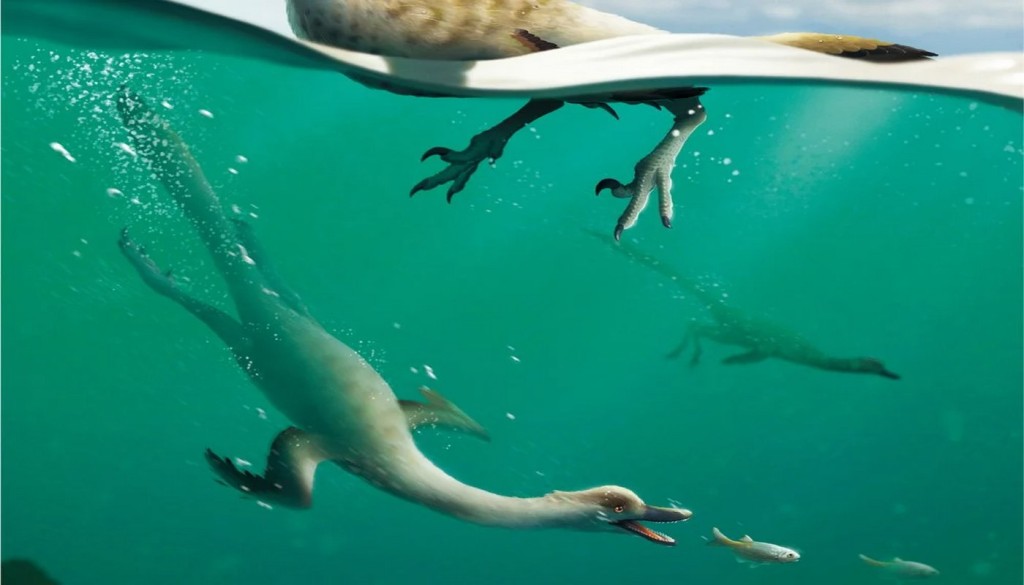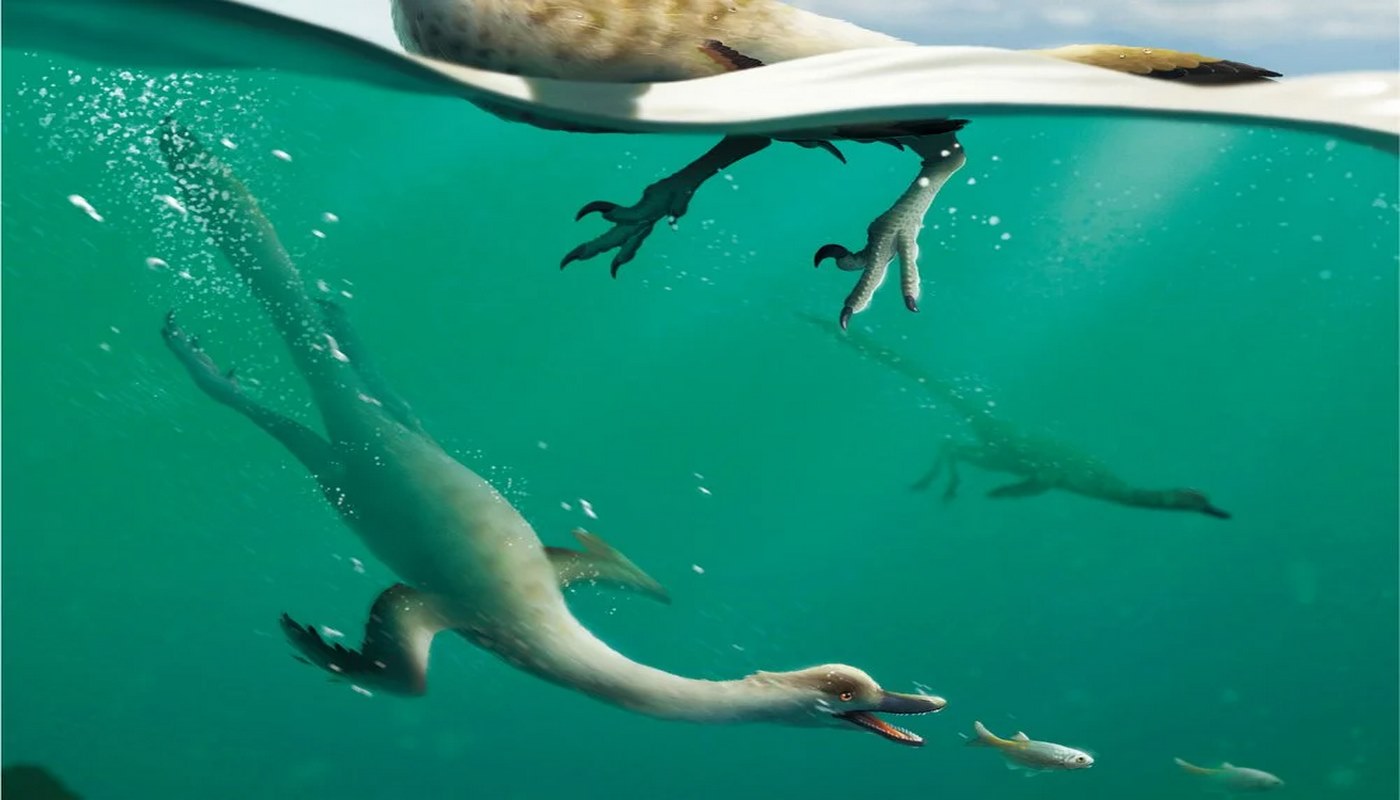
Across the whole history of paleontology, which has identified more than 700 species of dinosaurs, there’s never been one found with aquatic features—until now.
Natovenator or “swimming hunter” was a foot-long, streamlined, distant cousin of Velociraptor with a slender neck and a mouth filled with sharp teeth, leading to one scientist to call it a “Cretaceous cormorant.”
If dinosaurs weren’t real, their biological forms would have certainly shown up in fantasy stories as monsters or aliens.
They were the largest land animals in Earth’s history, and evolution took them on an extraordinary roller coaster ride of long necks, bony shields and protrusions, bone club tails, the invention of feathers and flight, bite forces that could crush a car, and more besides.
Yet for all this staggering diversity, it seemed at one point that dinosaurs had been content never to get their feet wet, as no swimming or diving adaptations had ever been discovered in the fossil record.
Then, in 2017, Halszkaraptor escuilliei, a feathered theropod dinosaur was discovered in Mongolia which appeared to have some adaptations for swimming. That fossil had comparatively similar features to certain waterfowl, or even crocodilians, and a theory emerged that it could have been semi-aquatic.
Then, a team from Seoul National University discovered another fossil at a famous dinosaur hotbed called Hermiin Tsav in the Gobi Desert, Mongolia.
“We realized that this was something special, because it was beautifully preserved with a nice skull and an extremely long neck,” said paleontologist Sung-jin Lee, who along with colleagues gave it the name Natovenator polydontus, or the many-toothed swimming hunter.
RELATED: One of the Largest ‘Sea Dragon’ Fossils Ever Found in Britain Unearthed As a Complete Ichthyosaur
Comparisons with Halszkaraptor led to fierce debate over the potential of a swimming dinosaur, which led to a deep scrutiny over the Natovenator find. In the end, the team was convinced, and for the first time in the fossil record, the dinosaurs took the plunge.
Dating to around 71 million years ago, many of the animal’s features would have worked well under water. A long slender neck would have given it a long range bite, and a mouth full of thin sharp teeth would, like modern aquatic predators such as latern fish and sharks, been the perfect weapon for snagging slippery fish.
SIMILAR: Frightening Relative of T-Rex is Discovered –And Might be ‘Missing Link’ in Tyrannosaur Evolution
Larger theropods have been theorized as being capable of wading into shallow water in search of prey, and certain research done on Spinosaurus has shown it may have used the water as a hunting ground, but these were still terrestrial animals and did not show signs of things like swimming or diving.
Writing more complexly, Smithsonian Magazine explains how Natovenator had a streamlined, downward-curving rib cage, similar to modern day penguins and auks, but a feature absent in every currently-identified dinosaur. This would have given it a streamlined profile underwater, allowing it to dive deep or swim fast, in theory.
The close relationship between Natovenator and Halzszkaraptor leads to the tantalizing prospect that, since the feathered theropod dinosaurs evolved into modern birds, there may be a whole lineage of dinos that evolved into modern waterfowl.
MORE DISCOVERIES: Paleontologists Discover Fossil Shows That Dinosaurs Had ‘Belly Buttons’
The main piece of evidence that’s missing is any clue as to how either of these animals swam, but the research in this niche is just getting started.
SHARE This Monumental Discovery…




















